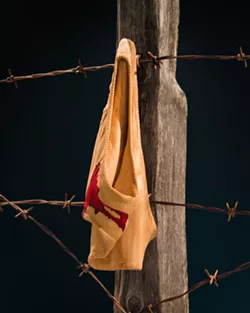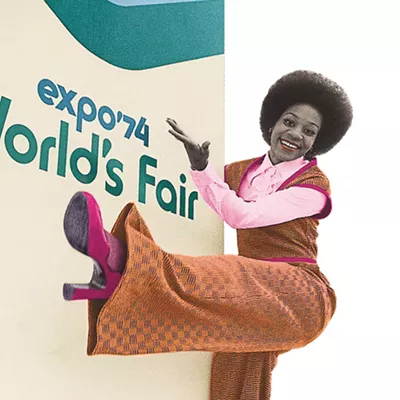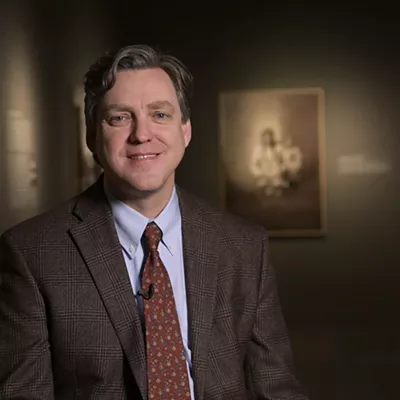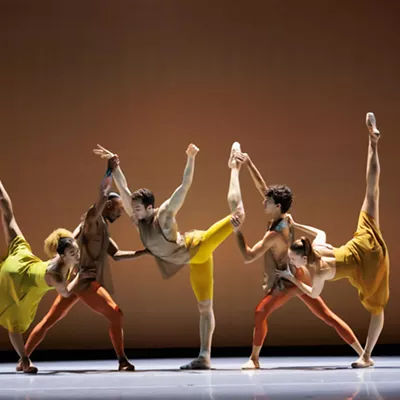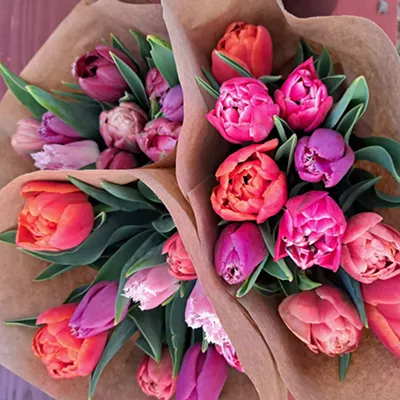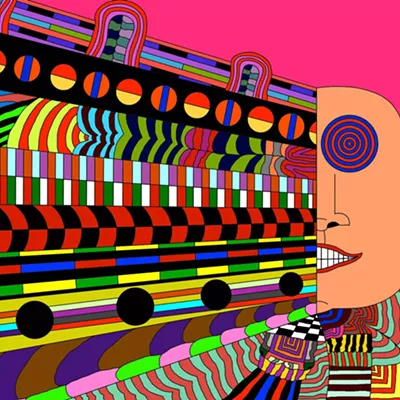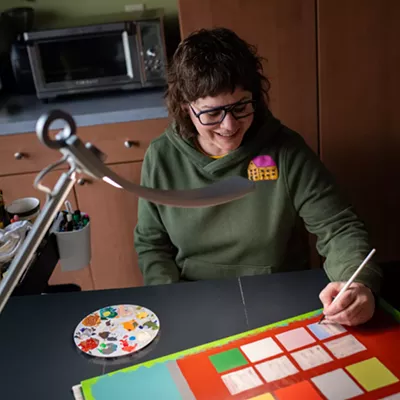A new contemporary art exhibit at the Northwest Museum of Arts and Culture includes a warning for its "red stains representing blood," but audiences who persevere will be rewarded with a rich experience.
In Humaira Abid's "Searching for Home," on display until Aug. 6, representations of violence pale in comparison to the gore of true-crime shows or even popular TV dramas. Moreover, Abid's handling of sensitive content is thoughtful and necessary.
"Art should 'comfort the disturbed and disturb the comfortable,'" says Abid, quoting Mexican-born anti-gang violence advocate César Cruz.
So in "Searching for Home," the artist explores human depravity, particularly involving displaced persons, mostly women and children. It was inspired by her extensive interviews with and research into the lives of female refugees who have resettled in Pakistan, where Abid was born, as well as the Pacific Northwest, which Abid now calls home.
The artworks are deliberately provocative, sometimes ambiguous, and embody both visual and conceptual tension.
The entry point to "Searching for Home" funnels viewers down several steps into "Borders and Boundaries," a sculptural installation as disturbing as it is exquisitely crafted. It consists of a barbed wire "fence" made of carved mahogany and cedar, upon which hangs underwear, also of carved wood, with a crimson stain in the crotch area.
Although the fence and discarded clothing are universally familiar objects, the underwear highlights the female experience. Visually, the red suggests menstruation but also miscarriage or sexual assault. Conceptually, the image conveys boundaries: Abid's as a confronter of taboo subjects, and the garment's owner, whose boundaries are tested and perhaps violated through their plight.
"Borders and Boundaries" also juxtaposes antithetical elements, creating a visceral and intellectual tension for the viewer. The vulgarity of the stained panties is countermanded by Abid's beautiful, lifelike, extraordinarily detailed carving.
Ditto for the barbed wire fence with all its chilling symbolism and contemporary relevance. Structurally, it controls the viewer who can see but not access the rest of the exhibition until they clear the length of fence. Conceptually, the fence forces viewers to become — temporarily — part of the narrative.
"For me, a work of art is not successful until there is a balance of execution and concept," says Abid, who initially defied her family to study sculpture and miniature painting at the National College of Arts in Lahore, Pakistan.
Abid's family expected her to pursue engineering or medicine, which she did briefly, yet returned to art. Doing so meant going against cultural and familial norms, which for a woman in Pakistan is a big deal.
"I had this pressure on my shoulders that I have to prove that my decision was right," Abid says, adding, "And I need to open doors for the next generation."
Even though Abid tells other people's stories in her artwork, she is also telling her story.
"Fragments of Home Left Behind" simulates a bullet-riddled wall on which are hung five miniature paintings of children, all displaced, all victims of crises not of their making and out of their control. A wall panel lists the children's country of origin: Somalia, Syria, Afghanistan.
But violence, especially involving children, or the loss of one's home or persecution to the point of peril, are not restricted to place or even time. It's universal.
"I hear that a lot," Abid says. "People tell me — although my work has some origin or reference to actual events — they seem universal."
Perhaps where there is a fragment of home, there is hope. In that way, Abid's work offers the healing and broad reach that her parents would have wished for her in the field of medicine.
Abid concurs, pointing to the children's expressions.
"You can see from their expression what they are going through, but they also have strength that they are going to get by this time, and they still imagine a safe and beautiful world," Abid says. "It's still possible." ♦
Humaira Abid: Searching for Home • Through Aug. 6, open Tue-Sun from 10 am-5 pm (third Thursdays until 8 pm) • $7-$12 • Northwest Museum of Arts & Culture • 2316 W. First Ave. • northwestmuseum.org • 509-456-3931


